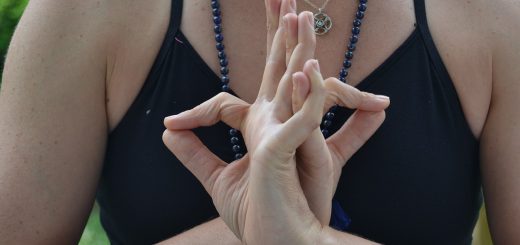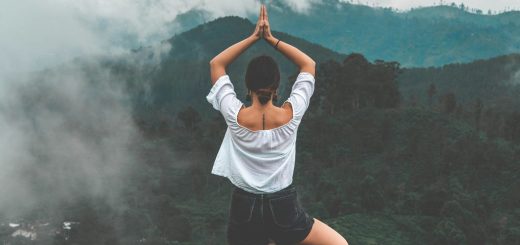Hip Opening Yoga Poses for Flexibility

Hey there, amazing readers! 🖐️ Just a quick note: yes, we know there are a lot of ads here. Trust us, we get it—it’s not the prettiest look, but they help us keep this blog alive and kicking. Those pesky little ads cover the costs of all the behind-the-scenes magic, from hosting and tech stuff to creating content we hope you’ll love.
We’re committed to delivering quality posts, and your support (even just sticking around despite the ads) means everything to us. So, bear with us, and thanks for helping us keep the good vibes rolling. Now, on to the fun stuff! 😉
TRANSLATE BUTTON AT THE END OF THE ARTICLE
A Quick Overview
Hip opening yoga poses are a crucial component of any yoga practice, as they help increase flexibility, mobility, and stability in the hips.
The hips play a significant role in our overall movement and posture, so keeping them healthy and flexible is essential for overall well-being.
In this article, we will explore the benefits of hip opening yoga poses, the importance of hip flexibility in yoga, and how to safely incorporate these poses into your practice.
We will also discuss some top hip opening poses for beginners, intermediate poses to enhance flexibility, and advanced poses for deep hip openings.
Additionally, we will provide tips for practicing hip opening poses safely, common mistakes to avoid, modifications for individuals with tight hips, breathwork techniques for deeper hip release, precautions for those with hip injuries, and ways to incorporate hip openers into your daily routine.
Benefits of Hip Opening Yoga Poses
Increased Flexibility: Hip opening poses help stretch and release tension in the muscles surrounding the hips, allowing for greater range of motion and flexibility.
Improved Posture: Tight hips can lead to poor posture, as they can pull the spine out of alignment.
Opening up the hips can help improve posture and reduce the risk of back pain.
Relief from Lower Back Pain: Tight hips can contribute to lower back pain, so hip opening poses can help alleviate discomfort by releasing tension in the hips and surrounding muscles.
Emotional Release: The hips are said to store emotional tension and stress, so hip opening poses can help release pent-up emotions and promote emotional well-being.
Increased Circulation: Hip opening poses can improve blood flow to the hips and pelvic region, which can help reduce inflammation and promote healing.
Importance of Hip Flexibility in Yoga
Foundation for Asanas: Hip flexibility is essential for many yoga poses, as tight hips can limit your ability to move into certain postures properly.
Core Stability: The hips are the center of gravity for the body, so having flexible hips can help improve core stability and balance in yoga poses.
Injury Prevention: Flexible hips can help prevent injuries in other parts of the body, as tight hips can lead to compensatory movements that may strain other muscles or joints.
Energetic Flow: In yoga philosophy, the hips are considered the seat of emotions and creativity, so opening up the hips can help facilitate the flow of energy throughout the body.
Mind-Body Connection: The hips are often associated with emotional and physical tension, so working on hip flexibility can help create a deeper mind-body connection and promote overall well-being.
How to Incorporate Hip Openers in Your Practice
Warm-Up: Start your yoga practice with a gentle warm-up to prepare the body for hip opening poses.
This can include dynamic movements like hip circles or gentle stretches.
Include Variety: Incorporate a variety of hip opening poses into your practice, targeting different areas of the hips such as the hip flexors, outer hips, and inner thighs.
Hold Poses: Hold each hip opening pose for at least 5-10 breaths to allow the muscles to release and relax.
You can gradually increase the hold time as your flexibility improves.
Listen to Your Body: Pay attention to how your body feels in each pose and adjust as needed.
Avoid pushing yourself too far and honor your body’s limitations.
Cool Down: End your practice with a few gentle stretches or a relaxation pose to help release any tension built up during the hip opening poses.
Top 5 Hip Opening Yoga Poses for Beginners
Bound Angle Pose (Baddha Konasana): Sit on the floor with the soles of your feet together and knees bent out to the sides.
Hold onto your feet or ankles and gently press your knees down towards the floor.
Low Lunge (Anjaneyasana): Step one foot forward into a lunge position, with the back knee resting on the ground.
Sink your hips down and forward to feel a stretch in the hip flexors.
Pigeon Pose (Eka Pada Rajakapotasana): From a plank position, bring one knee towards your hands and slide the other leg back, lowering the hips towards the floor.
This pose stretches the outer hips and glutes.
Happy Baby Pose (Ananda Balasana): Lie on your back and grab the outsides of your feet with your hands, bending your knees towards your armpits.
Gently rock side to side to release tension in the hips.
Child’s Pose (Balasana): From a kneeling position, sit back on your heels and walk your hands forward, lowering your forehead to the ground.
This pose gently stretches the hips and lower back.
Intermediate Hip Opening Poses to Enhance Flexibility
Half Pigeon Pose (Ardha Kapotasana): From downward dog, bring one knee towards your hands and slide the other leg back, lowering your hips towards the floor.
This pose provides a deeper stretch for the hips and thighs.
Cow Face Pose (Gomukhasana): Sit on the floor with one knee stacked on top of the other, and your feet flexed.
Reach one arm overhead and the other behind your back, clasping your hands if possible.
Extended Side Angle Pose (Utthita Parsvakonasana): From a lunge position, straighten your front leg and lower your hand to the inside or outside of the foot, reaching the other arm overhead.
This pose stretches the hips and side body.
Fire Log Pose (Agnistambhasana): Sit on the floor and stack one shin on top of the other, with the ankles in line with the knees.
Gently press the knees towards the floor to feel a deep stretch in the hips.
Revolved Triangle Pose (Parivrtta Trikonasana): From a standing position, step one foot back and rotate the torso towards the front leg, reaching one hand towards the floor and the other towards the ceiling.
This pose stretches the hips and hamstrings while improving balance.
Advanced Yoga Poses for Deep Hip Openings
Flying Pigeon Pose (Eka Pada Galavasana): From a seated position, bend one knee and hook the foot behind the opposite elbow, then shift the weight forward and lift the hips off the ground.
Lotus Pose (Padmasana): Sit on the floor with both legs crossed and bring one foot onto the opposite thigh, then do the same with the other foot.
This pose requires deep hip flexibility and external rotation.
King Pigeon Pose (Kapotasana): From downward dog, bring one knee towards your hands and slide the other leg back, then reach back for the foot and draw it towards the head.
This pose is a deep backbend and hip opener.
Splits (Hanumanasana): From a lunge position, slide the front foot forward and the back foot back, lowering the hips towards the floor.
This pose requires flexibility in the hamstrings, hip flexors, and groin.
Scorpion Pose (Vrischikasana): From a forearm plank position, lift the hips and walk the feet towards the head, arching the back and reaching the feet towards the head.
This pose is an advanced backbend and hip opener.
Tips for Safely Practicing Hip Opening Poses
Start Slow: Begin with gentle hip opening poses and gradually work your way up to more challenging poses as your flexibility improves.
Use Props: Props like blocks, blankets, or straps can help support you in hip opening poses and make them more accessible.
Engage Core Muscles: To protect the lower back and stabilize the pelvis, engage your core muscles while practicing hip opening poses.
Maintain Alignment: Pay attention to your alignment in each pose to prevent strain on the joints and ensure safe and effective stretching.
Breathe Mindfully: Focus on deep, steady breaths while in hip opening poses to help release tension and invite relaxation into the body.
Common Mistakes to Avoid in Hip Openers
Forcing the Hips: Avoid forcing the hips into positions they are not ready for, as this can lead to injury and strain on the muscles.
Overarching the Lower Back: Be mindful of keeping a neutral spine and avoiding overarching the lower back, which can strain the lumbar spine.
Neglecting the Breath: Remember to breathe deeply and mindfully throughout your practice to support relaxation and release in the hips.
Comparing Yourself to Others: Every body is unique, so avoid comparing your flexibility to others and focus on your own progress and journey.
Ignoring Pain: If you experience sharp or intense pain in a hip opening pose, ease out of the pose and modify as needed to prevent injury.
Modifications for Individuals with Tight Hips
Use Props: Props like blocks or blankets can help elevate the hips or support the body in hip opening poses for individuals with tight hips.
Gradual Progression: Start with gentler variations of hip opening poses and gradually work towards deeper stretches as flexibility increases.
Elevate Hips: Sitting on a cushion or yoga block can help elevate the hips and make hip opening poses more accessible for those with tight hips.
Practice Consistency: Regularly incorporating hip opening poses into your practice can help gradually increase hip flexibility over time.
Listen to Your Body: Pay attention to how your body feels in each pose and modify as needed to prevent strain on tight hips.
Breathwork Techniques for Deeper Hip Release
Deep Belly Breathing: Focus on breathing deeply into the belly to help relax the muscles surrounding the hips and promote a sense of ease in hip opening poses.
Ujjayi Breath: Engage in ujjayi breathing, also known as oceanic breath, to create a calming and rhythmic breath pattern that can support relaxation in the body.
Three-Part Breath: Practice three-part breath by inhaling deeply into the belly, then expanding the ribcage, and finally filling the chest with breath.
This can help release tension in the hips and promote overall relaxation.
Dirga Pranayama: Practice dirga pranayama, or complete breath, by inhaling deeply through the nose, filling the belly, ribs, and chest with breath.
Exhale fully and repeat to promote relaxation and release in the hips.
Sitali Pranayama: Practice sitali pranayama, or cooling breath, by inhaling through a rolled tongue or pursed lips, then exhaling through the nose.
This breath technique can help cool the body and relax the hips.
Precautions for Those with Hip Injuries
Consult a Professional: If you have a hip injury or chronic hip pain, consult with a healthcare professional or physical therapist before practicing hip opening poses.
Modify as Needed: Listen to your body and modify hip opening poses to avoid aggravating the injury or causing further discomfort.
Avoid Overstretching: Be mindful of not overstretching the hip joint in poses that can exacerbate the injury, and focus on gentle stretches and movements.
Communicate with Your Instructor: Inform your yoga instructor about any hip injuries or limitations so they can provide appropriate modifications and guidance during class.
Focus on Healing: Prioritize healing and rehabilitation of the hip injury by incorporating gentle movements and stretches to support the recovery process.
Incorporating Hip Openers into Your Daily Routine
Morning Stretch: Start your day with a few gentle hip opening stretches to wake up the body and prepare for the day ahead.
Desk Breaks: Take short breaks throughout the day to stretch your hips and release tension from sitting for long periods at a desk.
Evening Relaxation: Wind down in the evening with restorative hip opening poses to release tension from the day and promote relaxation before bedtime.
Post-Workout Stretch: Incorporate hip opening poses into your post-workout routine to stretch and release tension in the hips after physical activity.
Consistent Practice: Make hip opening poses a regular part of your yoga practice to maintain hip flexibility and overall well-being over time.
Conclusion
Incorporating hip opening yoga poses into your practice can significantly enhance your flexibility, mobility, and overall well-being.
By regularly practicing hip opening poses, you can improve hip flexibility, relieve tension and tightness in the hips, and prevent injuries in other parts of the body.
Remember to start slowly, listen to your body, and use props or modifications as needed to practice safely and effectively.
Whether you are a beginner or an advanced practitioner, hip opening poses can help you deepen your yoga practice and cultivate a deeper mind-body connection.
By following the tips, modifications, and breathwork techniques outlined in this article, you can safely and confidently incorporate hip openers into your daily routine for a healthier and more flexible body.

The Enlightenment Journey is a remarkable collection of writings authored by a distinguished group of experts in the fields of spirituality, new age, and esoteric knowledge.
This anthology features a diverse assembly of well-experienced authors who bring their profound insights and credible perspectives to the forefront.
Each contributor possesses a wealth of knowledge and wisdom, making them authorities in their respective domains.
Together, they offer readers a transformative journey into the realms of spiritual growth, self-discovery, and esoteric enlightenment.
The Enlightenment Journey is a testament to the collective expertise of these luminaries, providing readers with a rich tapestry of ideas and information to illuminate their spiritual path.
Our Diverse Expertise 🌟
While our primary focus is on spirituality and esotericism, we are equally passionate about exploring a wide range of other topics and niches 🌍📚. Our experienced team is dedicated to delivering high-quality, informative content across various subjects ✨.
To ensure we provide the most accurate and valuable insights, we collaborate with trusted experts in their respective domains 🧑🏫👩🏫. This allows us to offer well-rounded perspectives and knowledge to our readers.
Our blog originally focused on spirituality and metaphysics, but we’ve since expanded to cover a wide range of niches. Don’t worry—we continue to publish a lot of articles on spirituality! Frequently visit our blog to explore our diverse content and stay tuned for more insightful reads.






